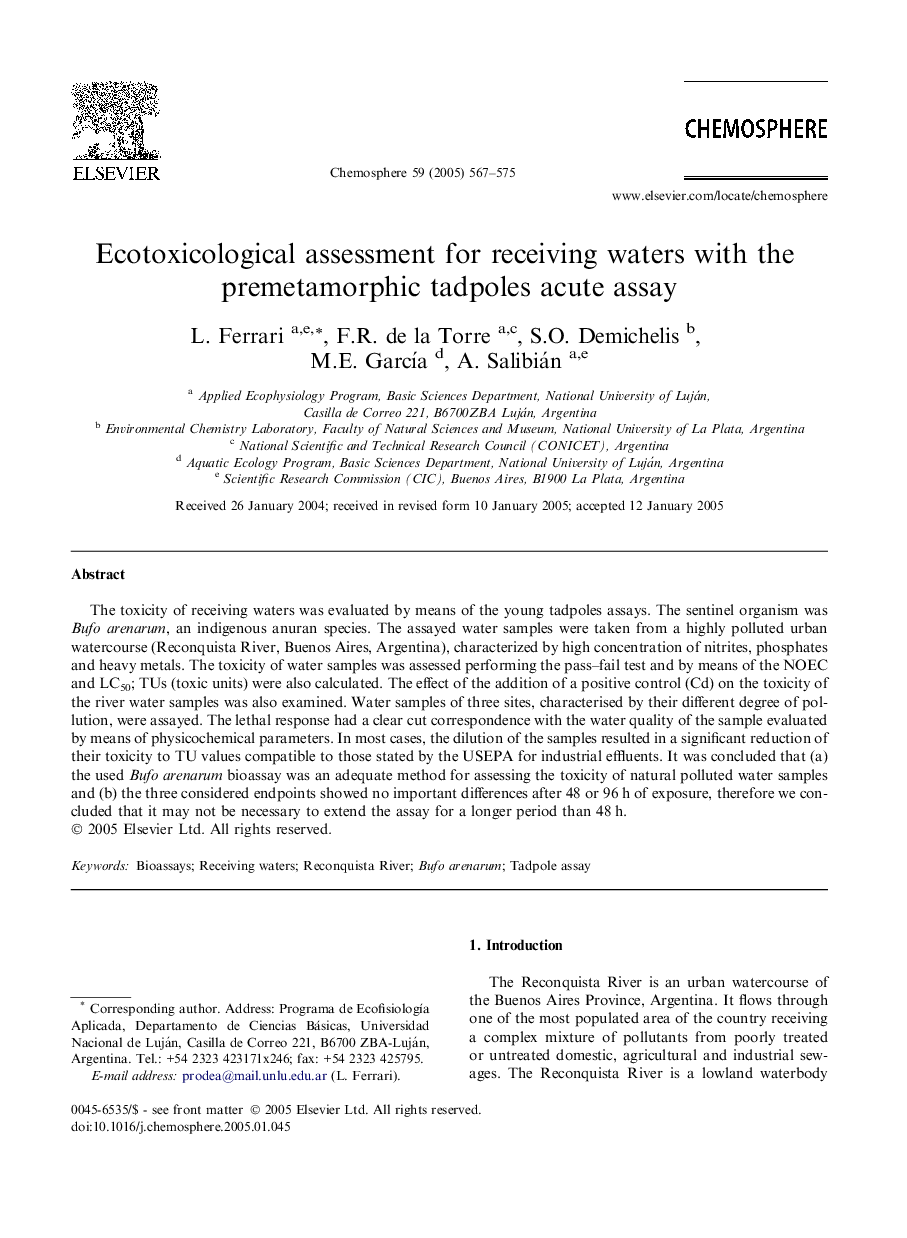| Article ID | Journal | Published Year | Pages | File Type |
|---|---|---|---|---|
| 9451294 | Chemosphere | 2005 | 9 Pages |
Abstract
The toxicity of receiving waters was evaluated by means of the young tadpoles assays. The sentinel organism was Bufo arenarum, an indigenous anuran species. The assayed water samples were taken from a highly polluted urban watercourse (Reconquista River, Buenos Aires, Argentina), characterized by high concentration of nitrites, phosphates and heavy metals. The toxicity of water samples was assessed performing the pass-fail test and by means of the NOEC and LC50; TUs (toxic units) were also calculated. The effect of the addition of a positive control (Cd) on the toxicity of the river water samples was also examined. Water samples of three sites, characterised by their different degree of pollution, were assayed. The lethal response had a clear cut correspondence with the water quality of the sample evaluated by means of physicochemical parameters. In most cases, the dilution of the samples resulted in a significant reduction of their toxicity to TU values compatible to those stated by the USEPA for industrial effluents. It was concluded that (a) the used Bufo arenarum bioassay was an adequate method for assessing the toxicity of natural polluted water samples and (b) the three considered endpoints showed no important differences after 48 or 96Â h of exposure, therefore we concluded that it may not be necessary to extend the assay for a longer period than 48Â h.
Related Topics
Life Sciences
Environmental Science
Environmental Chemistry
Authors
L. Ferrari, F.R. de la Torre, S.O. Demichelis, M.E. GarcÃa, A. Salibián,
